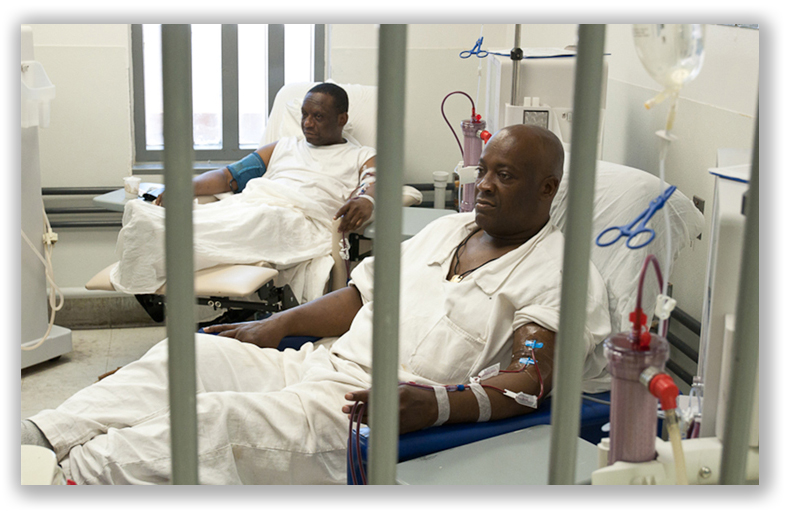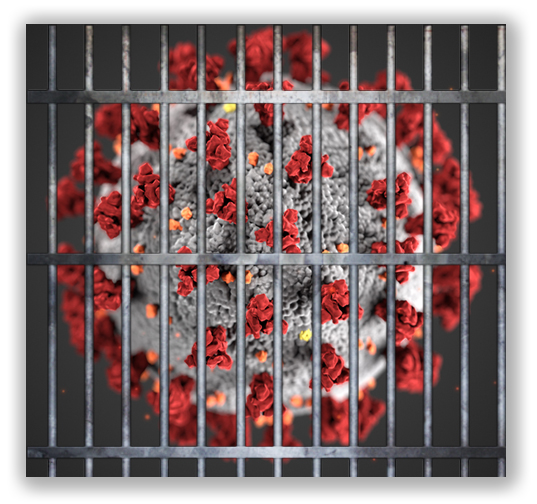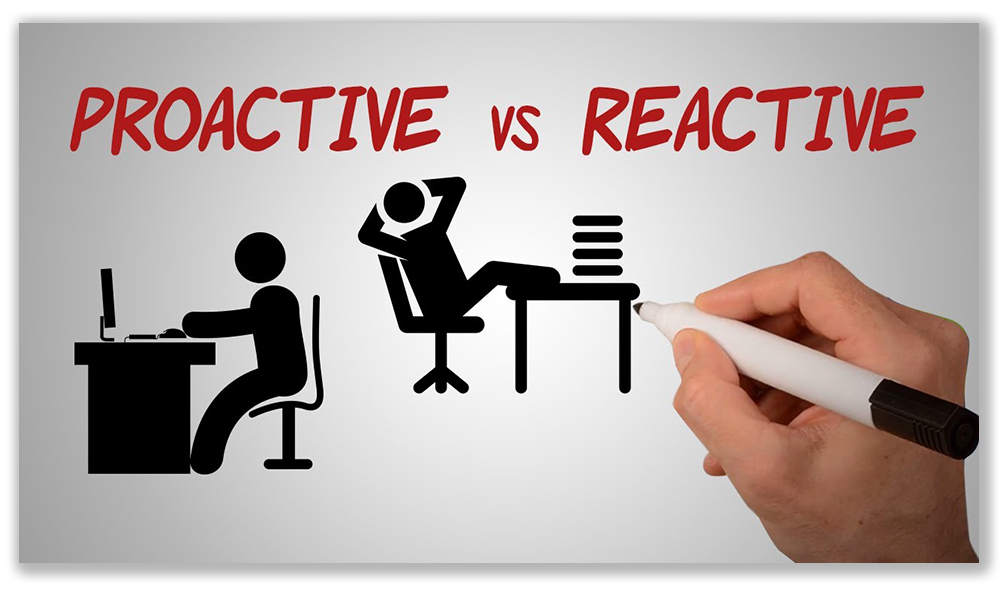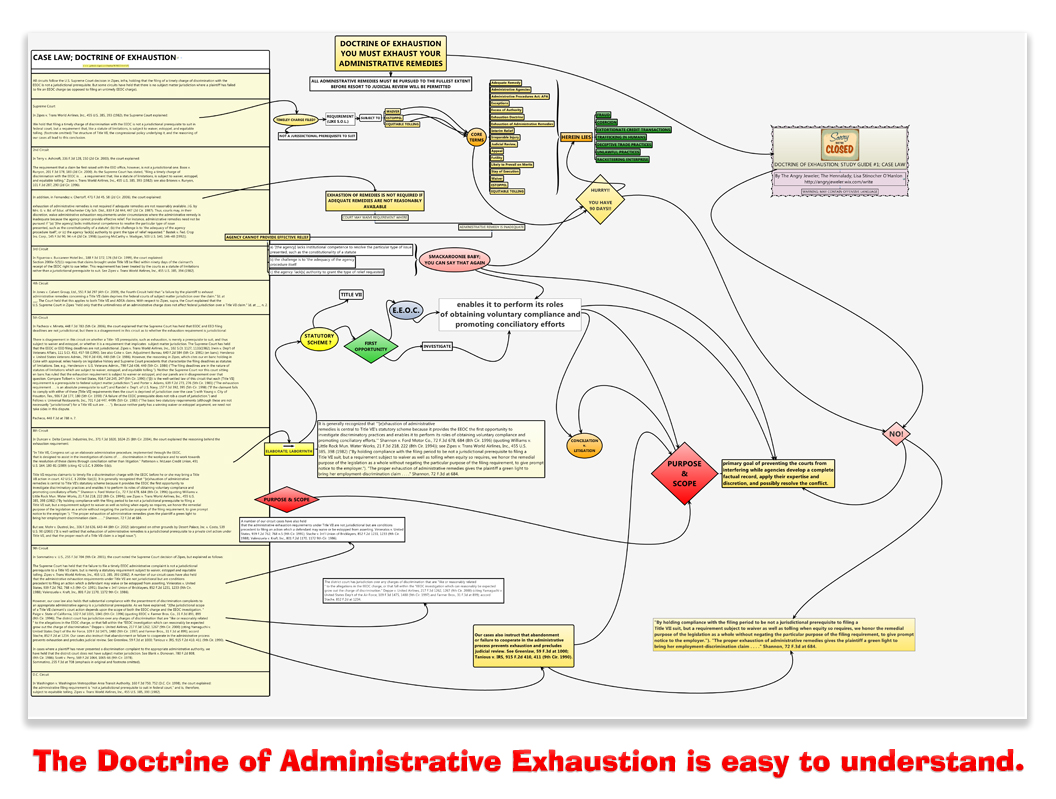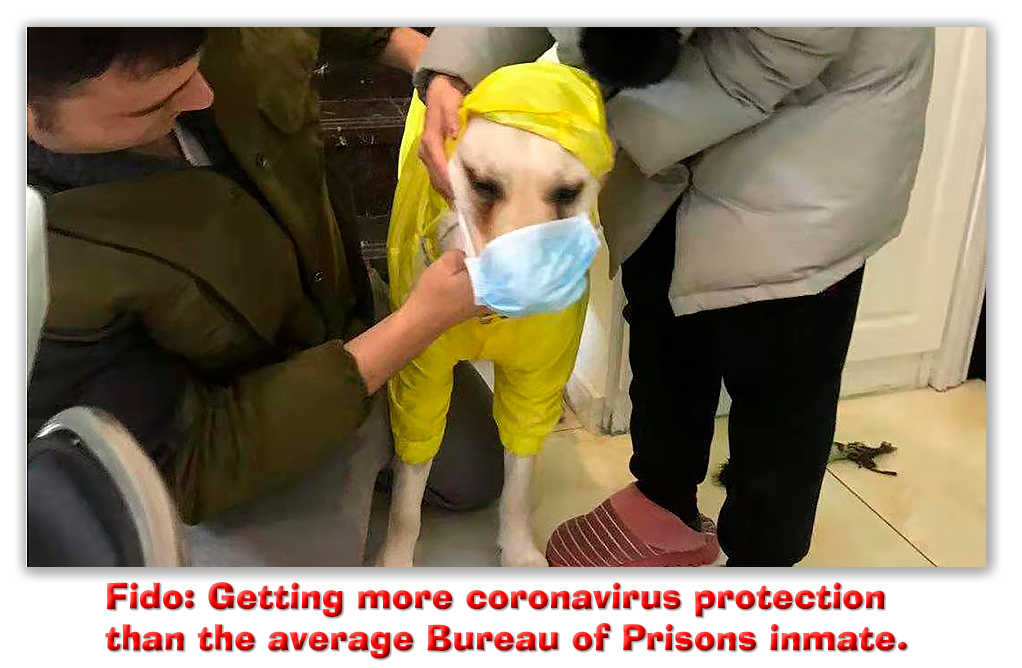We post news and comment on federal criminal justice issues, focused primarily on trial and post-conviction matters, legislative initiatives, and sentencing issues.

BOP SAYS IT’S “DOING PRETTY GOOD” ON COVID-19
Coronavirus has swept through the Federal Bureau of Prisons in the past three weeks, leaving over 725 confirmed cases among inmates, at least 16 prisoners dead, and, in the words of CNN, “raising concerns about the government’s handling of the crisis.” In response, the BOP has announced Phase VI of its COVID-19 response, which seems to consist primarily of another month of inmate lockdown.
Inside some facilities, CNN reported last weekend, inmates have said they are locked in crammed and cramped cells without face masks and enough soap, and guards have grown concerned that they could be spreading the disease to their families. At a prison in Butner, North Carolina, the number of cases jumped by dozens – nearly 400% – earlier this week. At FCI Oakdale, Louisiana, where six inmates have died in recent days, corrections officers had to quell a small uprising with pepper spray on Wednesday, an official at the prison said.
Last weekend, BOP Director Michael Carvajal defended the steps the agency has taken to address the pandemic: “I don’t think anybody was ready for this COVID, so we’re dealing with it just as well as anybody else and I’d be proud to say we’re doing pretty good,” Carvajal, who was named director in late February, told CNN.
Actually, the correct grammar would be “doing pretty well.” But mangled English is hardly the biggest problem with Mike’s auto-hagiographic assessment.
The Northwest Arkansas Democrat Gazette released emails yesterday in which Arkansas health officials discussed whether the BOP fully understood the “seriousness” of the coronavirus outbreak at the FCI Forrest City federal prison, and whether prison officials were fully cooperating with the mitigation effort. Although Director Mike spun the Centers for Disease Control inspection of FCI Forrest City as being the result of a BOP request for assistance, the released emails show that shortly after the first positive COVID-19 case at the FCI was disclosed on Friday, April 3rd, Dr. Naveen Patil, the Arkansas Department of Health director for infectious diseases, questioned the prison’s efforts and expressed a desire for CDC backup.
 When an Arkansas state inmate came down with the virus, Mother Jones reported yesterday, prison officials immediately tested 48 other inmates in the unit, finding that 46 of them – almost all of whom had no symptoms – were infected. But the BOP’s COVID-19 planning has left the agency with no ability to test. “We have very, very limited amounts of the testing kits,” Brandy Moore, secretary treasurer of the national union that represents correctional officers in federal prisons, was quoted as saying by Mother Jones.
When an Arkansas state inmate came down with the virus, Mother Jones reported yesterday, prison officials immediately tested 48 other inmates in the unit, finding that 46 of them – almost all of whom had no symptoms – were infected. But the BOP’s COVID-19 planning has left the agency with no ability to test. “We have very, very limited amounts of the testing kits,” Brandy Moore, secretary treasurer of the national union that represents correctional officers in federal prisons, was quoted as saying by Mother Jones.
At FCC Terre Haute, Indiana, “we have between 2,500 and 3,000 inmates, and we were given four tests,” Steve Markle, another leader of the national union who works at the prison, told Mother Jones in late March. At FCI Oakdale, correctional officers were told to stop testing people and just assume that anyone with symptoms had been infected, according to Ronald Morris, president of the local union there — even though, as shown by the Arkansas state prison experience, plenty of people can be asymptomatic.
All of this, Mother Jones reported, “is to say that statistics reported by the Federal Bureau of Prisons are likely massive undercounts. “Our numbers are not going to be adequate because we’re not truly testing them,” Moore said.
Still, the BOP’s COVID-19 numbers – which the agency promised would be updated every day at 3 pm but which, each day, seems to be reported later and later – were updated after 6 pm last night to report COVID-19 had been confirmed in 449 inmates and 280 staff, spread across 43 BOP facilities. The number is undoubtedly much higher.
 Meanwhile, in a filing in the Eastern District of New York yesterday, the BOP admitted that “‘because of the shortage of tests, testing is currently reserved for those meeting’ certain criteria, including the kind of symptoms the inmate is facing, his potential exposure, whether he is high risk and whether he works in a high-contact role such as food service.” Through Tuesday, April 14, the number of inmates tested at MCC New York and MDC Brooklyn remained at 11 (the same number reported the prior Friday).
Meanwhile, in a filing in the Eastern District of New York yesterday, the BOP admitted that “‘because of the shortage of tests, testing is currently reserved for those meeting’ certain criteria, including the kind of symptoms the inmate is facing, his potential exposure, whether he is high risk and whether he works in a high-contact role such as food service.” Through Tuesday, April 14, the number of inmates tested at MCC New York and MDC Brooklyn remained at 11 (the same number reported the prior Friday).
If you don’t test, you cannot confirm. If you cannot confirm, your data are meaningless.
Perhaps most sobering was a report in the Santa Barbara Independent that an inmate, Efrem Stutson, was released on April 1st and put on a Greyhound bus to San Bernardino by USP Lompoc officials while he had a hacking cough and was so ill “he could hardly hold his head up.” Efrem refused to go to the hospital that night, but the next morning his family insisted. Paramedics wearing protective equipment rushed him to Kaiser Permanente medical center in Fontana. Doctors diagnosed him with COVID-19 and put him in quarantine. No visitors were allowed. Four days later, Efrem died.
His sisters are heartbroken — and furious, the Independent reported. “Why did they release him so sick?” one asked. “They sent him home on his deathbed.”
 A USP Lompoc spokesman confirmed that Efrem was released on April 1st. But for “privacy, safety, and security reasons,” he said, he could not comment on Efrem’s medical condition at the time. “All inmates, prior to releasing from the BOP, will be screened by medical staff for COVID-19 symptoms,” he said. “If symptomatic for COVID-19, the institution will notify the local health authorities in the location where the inmate is releasing, and transportation that will minimize exposure will be used, and inmates will be supplied a mask to wear.”
A USP Lompoc spokesman confirmed that Efrem was released on April 1st. But for “privacy, safety, and security reasons,” he said, he could not comment on Efrem’s medical condition at the time. “All inmates, prior to releasing from the BOP, will be screened by medical staff for COVID-19 symptoms,” he said. “If symptomatic for COVID-19, the institution will notify the local health authorities in the location where the inmate is releasing, and transportation that will minimize exposure will be used, and inmates will be supplied a mask to wear.”
Laura Harris-Gidd, Efrem’s sister, said he wasn’t wearing a mask when she picked him up at the bus station. “I just don’t understand why they would let him out instead of quarantining him and taking care of him,” she said. “I think they’re hiding a lot.”
“We’re dealing with it just as well as anybody else,” BOP Director Michael Carvajal said, “and I’d be proud to say we’re doing pretty good.” Right.
Hold you head up high, Mike.
– Thomas L. Root




